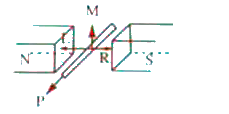For a given metallic conductor , the variation of current through the conductor with potential difference applied across the conductor is shown in the given graph. If temperature of the conductor is increased , then slope tan theta _PHY_E01_0010_Q01.png)
Decrease
Remain same
Increases
Both (2) and (3)
Step by step video & image solution for For a given metallic conductor , the variation of current through the conductor with potential difference applied across the conductor is shown in the given graph. If temperature of the conductor is increased , then slope tan theta by Physics experts to help you in doubts & scoring excellent marks in Class 12 exams.
Updated on:21/07/2023Topper's Solved these Questions
- TEST 1Book:AAKASH INSTITUTE ENGLISHChapter:TEST 1Exercise:EXERCISE
Explore 21 Videos
- SYSTEM OF PARTICLES AND ROTATIONAL MOTIONBook:AAKASH INSTITUTE ENGLISHChapter:SYSTEM OF PARTICLES AND ROTATIONAL MOTIONExercise:Try Yourself
Explore 63 Videos
- TEST 2Book:AAKASH INSTITUTE ENGLISHChapter:TEST 2Exercise:Exercise
Explore 308 Videos
Similar Questions
How does the mobility of electrons in a conductor change, if the potential difference applied across the conductor is doubled, keeping the length and temperature of the conductor constant ?
View SolutionWhen a current passes through a resistor, its temperature increases. Is it an adiabatic process?
View SolutionIf the potential difference across the ends of a conductor is doubled, the energy loss becomes-
View SolutionName a device that helps to maintain a potential difference across a conductor.
View SolutionWhen no current is passed through a conductor,
View SolutionOn increasing the temperature of a conductor, its resistance increases because
View SolutionFind the emf induced across the ends of the conductor shown in the figure

View SolutionAn electric potential difference will be induced between the ends of the conductor shown in the figure, if the conductor moves in the direction shown by

View SolutionIf the potential difference across the ends of a conductor is doubled, the current flowing through it gets
View SolutionIn an electric circuit shown alongside, find

terminal voltage of the battery
View Solution